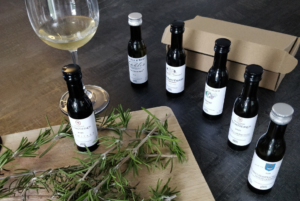When to harvest wine grapes ?

Dear wine producers, wine lovers, and professionals, the harvest is one of the most important processes and seasons of the year for all wine producers.
An efficient and effective harvest is crucial: the quality of the wine and the image of the winery will be decided during this process.
However, it’s known that the wine harvest depends on many factors such as the time of the year, the climate, the grape variety, or the weather.
This year, all the countries of the world have been impacted by heat waves which affected the production of vineyards in Spain, France, Italy…

For example, in Spain, the drought has reduced the production, making the wine producers face a situation in which the production decreased and the price of the wine standstill, even sending wine sample bottles is still expensive!
In France, different areas suffered from the heatwaves such as the Roussillon area. Indeed, the harvest started 15 days before the past year.
Although these uncontrolled factors, there are some other decisions for the wine producers to take, such as the time you harvest and the way you choose to do the harvesting.
Before harvesting, the wine producers have to monitor the rise of the sweetness and acidity levels of the fruit. Also, this step will allow the producer to track the ripening process of the grapes.
Secondly, the winemakers need to coordinate the arrival of the fruit at the winery to make sure it’s not overwhelmed with defective fruits.
After these conditions, it is time to decide if you are going to machine or hand harvesting.
Is machine harvesting better than hand harvesting ?
Even though there are two ways of harvesting, it’s known that there are some legal or territory factors that leave no option for the wine producers to select between the two ways.
Machine harvesting
How does machine harvesting work?
The machine harvesters have to shake the trunk of the vine while the machine is receiving the ripe berries.
Which are the benefits of this method?
- Fast process
- Reduce costs
- Save energy
- Work at night
And disadvantages?
- Fruits are not selected
- Damage the trunk
- Forbidden in some areas
- The land has to be flat
Hand Harvesting
How does hand harvesting work?
Hand harvesting is done by the pickers who are cutting off individual bunches of grapes.
What are its benefits of it?
- Selection of the grapes
- Less damage is done to the vines
- Allowed in every location
- Accessible on every land
And disadvantages?
- High costs
- Slower process
- Intensive labor
Now, it is up to you to decide which one is the most accurate for you!
Even if there are some factors that you can’t control such as environmental issues, you can take action on them by reducing your ecological footprint.

How can you make a difference by using wine sample bottles?
Well, we know that wine producers tend to use wine sample bottles for their prospection, marketing or customer loyalty projects.
Although this type of operation improves the winery’s presence, it also has a negative impact on the environment due to bottle waste and greenhouse gas emissions.
That’s why companies such as Vinovae created the Vinotte (little samples bottles). Focused on creating a way in which the ecological impact is reduced when wine producers send a sample.
Indeed, when you are reducing the number of bottles that you are sending, the environmental footprint is also improved.
But why the Vinotte can have an impact on the environmental footprint?
The Vinotte is one of the bigest solutions for the environmental impact on the wine sector, as other solutions such as hand harvesting, cero chemics use in the wineyard or minimize waste generation.

Talking about the Vinotte, we can see that it is make out of:
Recyclable P.E.T.
Reduces the sample glass bottle waste.
Shipping it generates 50 times less greenhouse gas emissions than a glass bottle.
In fact, with the Vinottes, you can send 6 types of different samples in the same box instead of 1 big bottle one by one.
The little wine sample bottles are lighter and cheaper to send all around the world.
In addition, the Vinotte can be reused in different ways, by filling it up with shampoo when you are traveling, or oil to cook, which can give your wine sample bottles a second life.



